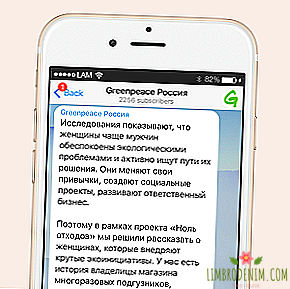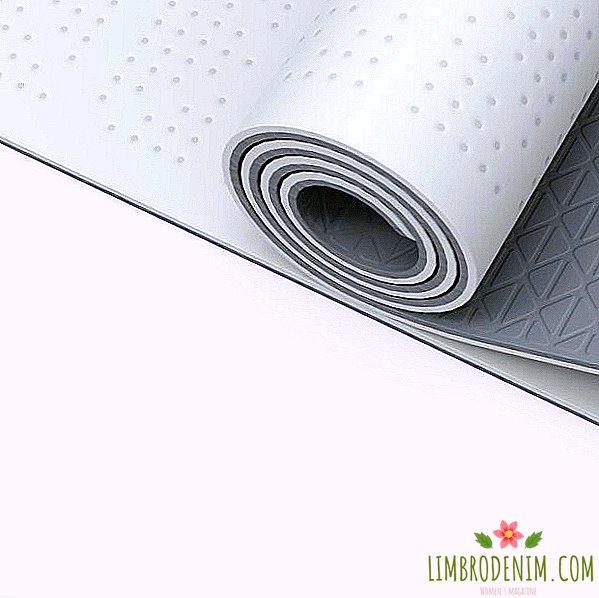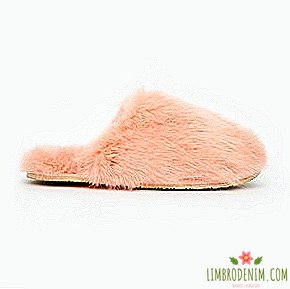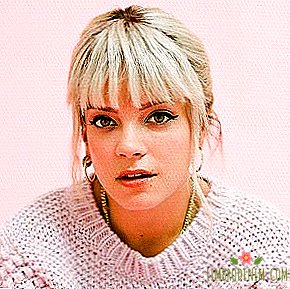"Themes of death and vintage are tightly connected": As we did the trivia store, Nature Morte
IN THE RUBRIC "COMMUNICATIONS" WE TELL ABOUT GIRLS, who came up with a common cause and achieved success in it. But at the same time we expose the myth that women are not capable of friendly feelings, and can only aggressively compete. Not so long ago, we showed small shops and restoration studios that give a new life to furniture and trifles for a house from past eras. One of these projects, Nature Morte, appeared quite recently thanks to her friends Svetlana Mart and Anastasia Korotkova, who had a common passion for a kitchenware hunt with history. We asked them about the most memorable findings, plans for the future and why people were tired of things.
Text: Anna Aristova
About acquaintance
Anastasia: We met Sveta four years ago in Krasnodar. I lived there, and Sveta arrived on business - we were immediately joined by a love for bicycles with fixed gear.
Svetlana: Then I stole Nastya for a month in Moscow and we became friends.
About the background
Svetlana: I produce photo and video, and also work as an actress and model.
Anastasia: And I just didn’t do anything - for example, I designed events and worked in the showroom of modular and vintage synthesizers. Now stylized for Nature Morte and making Anotherone jewelery.
How Nature Morte Appeared
Anastasia: We are fans of vintage items, so we occasionally get out together at flea markets. Over time, we have accumulated a lot of good - the idea of the store was in the air. It took us a year to finally say to each other in October of 2018: "Let's do it!" So there was a project.
Svetlana: Nastya and I have long wanted to do a joint project, we had different ideas, but somehow it did not work out. For example, we planned to make a tombstone manufacturing bureau.
Anastasia: It was at the very beginning of our acquaintance, but we quickly realized that it was a dangerous market. We even almost had an order - I was approached by a friend who was planning to order a gravestone for the deceased sister. But then everything broke down - apparently, she decided to take a more traditional road. Themes of death and vintage seem to be tightly connected in our consciousness: we extricate objects from oblivion and give them a new life.
How are things
Anastasia: Things we find in flea markets and online auctions - they come to us from the regions of Russia and neighboring countries. In our collection there are a couple of lots of acquaintances, something we took from Sveta's personal collection, and there are lots that I begged from my boyfriend's mother. In addition to the sale, we rent out the objects - set stylists are mainly interested in them.
Svetlana: We had one, while a small order for the event, it was "Vampire Ball". In the future, we plan to work with "big rent".
About memorable finds
Svetlana: We participated in the Lambada Market, and we needed the “queen” of our Corner. As a result, we found a blue vase, very cool, the size on the Internet was average - as a result, a vase came to us with half Nastya. I honestly can’t imagine what a bouquet should be for her, except a hundred roses. A punch bucket for a summer party there could be cooked. She still remains our queen, she is taken only for fashion shots. But the most memorable find is still the first one - glass-leg shots.
Anastasia: Yes, they have a sad story. They were manufactured at a defense plant in limited quantities. We bought six, and when they wanted to pick up the others that were on the market, it suddenly closed. We have not recorded the seller’s contacts and are now very sorry. I also remember the cool blue vases of Bohemian glass. Before buying them, we made each other a condition that we were going to the market only for metal objects, but in the end we saw them and fell in love. So we spent almost all the money on these two vases and left. We also had a cool vase that we bought when we were just testing online auctions. People usually sell their collections on them and take pictures of them as they should, so it is not always clear from the picture what the object actually looks like. We did not install the origin of the vase, but in the end it turned out to be even more beautiful than we thought. The vase was small and very heavy - just a huge piece of glass or crystal. I really hoped I could keep it for myself, but in the end she left too.
How hard it is to part with things
Svetlana: At first it was hard, now easier. Previously, I wanted to keep every single thing for myself - probably, this was out of habit, because we used to buy all the objects for ourselves. The hardest thing, perhaps, I will be to part with an Art Deco crystal jewelry box from Germany in the 1930s. Everyone tries to encroach on it forever, but as soon as they see chips on the lid from the inside, they immediately refuse. I wonder why people think that a thing that has been almost a hundred years old must necessarily be whole. I, on the contrary, like it when things live their lives, when they have patina and chips on them - this is an imprint of time.
Anastasia: It is not very difficult for me to part with our objects, because I have already spent some time with them. I understand that I can not buy absolutely everything. And the emergence of Nature Morte was a great way to unburden yourself.
About vintage boom and responsible consumption
Anastasia: It seems to me that there has always been an interest in vintage tableware, just earlier they wrote less about it. But now, people seem to be tired of a mass product, things with history have become more valuable. Vintage is a responsible consumption, because we extend the life of old items.
Svetlana: If you draw conclusions from the point of view of videos and photos, there is a feeling that people are tired of clothes, and photographers and stylists are tired of taking pictures of people and switched to the subject. Began to develop more network design.
As for me personally, I try to follow the principles of responsible consumption and have been sorting rubbish for three years now and giving advice to friends and subscribers on the topic. There is one drawback - to take the garbage to the sorting point, you need a car, so you get a vicious circle. But I use it infrequently. I also try to replace household items with more environmentally friendly alternatives - for example, I use cotton swabs and toothbrushes on a wooden base.
Anastasia: It is difficult to hand over garbage separately, because there are not so many receiving points. When you see ordinary containers in Moscow, it becomes sad - people drop everything there in a row. I also try to reduce plastic consumption: I don’t use bags, I always take a string bag and a backpack to the store, I try not to buy bottled water. Of course, I still have to grow and grow.
About working with friends
Svetlana: At the very beginning we had disagreements over how to develop the project. But we quickly cooled down and, having discussed everything, decided to move on. Here, as in any relationship - you need to be able to talk and listen to each other. In no case can not just break and throw everything. Yes, Nastya and I have a similar taste, but we disagree on some issues, and this is normal. It is important to find a compromise.
Anastasia: Plus a lot of work with a friend too. Working together, we divide the duties in half - for example, Sveta is better at keeping the communication part, and I love signs and can carefully keep reports. We do some things like filming together - Sveta is producing, and I am styling. And, of course, we can always insure each other.
About future plans
Anastasia: We work with a narrow segment: vintage in the post-Soviet space is a very undervalued thing, which is of little interest outside of Russia and the near abroad. But in the same USSR there were cool artists who worked with art glass - the works of some of them can even be found in museums - and we would very much like to develop such a direction. While we are working with more budget objects, but we want to make a line of Soviet art glass. Of course, this is a completely different price category, but it seems to me that just such objects may be interesting also abroad.
Before the end of the year, we plan to open our own offline space or, for a start, to unite with someone. The ability to communicate with customers, to discuss with them the history of things over a cup of tea is a real dream.
PHOTO:lmbd





